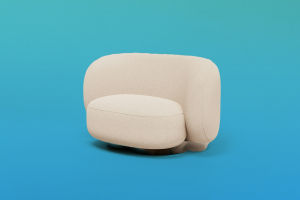Dear Lykkers! Modern architecture is often defined by its minimalist designs, clean lines, and innovative use of materials, but it’s also an art form that adapts to the environment.
Designed by Argentine architects from Alarcia Ferrer Arquitectos, La Cuesta House seamlessly integrates with the surrounding natural landscape while showcasing a sleek, contemporary design.
Innovative Design: A Unique Structure in Harmony with Nature
The first thing that strikes you about La Cuesta House is its bold yet harmonious placement on the rugged hills.
Adaptation to Topography: One of the key principles of modern architecture is creating structures that blend with their surroundings, and La Cuesta House takes this to another level. Built on a steep hillside, the house is designed in such a way that it doesn’t fight the natural terrain. Instead, it adapts to the slope, creating a dynamic and flowing structure that enhances its natural environment.
Minimalist Aesthetic: La Cuesta House features clean, geometric lines and a minimalist color palette that draws attention to the form and function of the house rather than decorative elements. Its simplicity adds elegance to the overall design while also contributing to a sense of calm and spaciousness.
Use of Materials: Blending with the Landscape
The materials used in La Cuesta House reflect the core values of modern architecture — simplicity, functionality, and harmony.
Concrete and Glass: The house is predominantly made from concrete, a material often favored in modern design for its strength and versatility. Large glass panels are used extensively throughout the home, allowing natural light to flood in and providing panoramic views of the surrounding mountains. The use of glass also creates a seamless connection between the indoor and outdoor spaces, enhancing the feeling of living within nature.
Local Materials: La Cuesta House also incorporates materials sourced from the local area, helping it blend even further with its environment. The earthy tones of the concrete reflect the natural hues of the surrounding hills, making the house appear as an organic extension of the landscape.
Sustainability: Modern Architecture’s Green Footprint
In line with the growing trend of sustainable design, La Cuesta House embraces eco-friendly principles.
Natural Ventilation: The house is designed to take advantage of the region’s natural ventilation. The open layout and strategically placed windows allow for a constant flow of fresh air, reducing the need for artificial cooling systems and lowering the home’s overall energy consumption.
Energy Efficiency: In addition to using sustainable materials, La Cuesta House is designed to be energy-efficient. The large windows not only offer beautiful views but also let in ample sunlight, minimizing the need for artificial lighting during the day. The thick concrete walls provide natural insulation, keeping the house cool in summer and warm in winter.
Interior Layout: Open and Functional
The interior of La Cuesta House is as impressive as its exterior, emphasizing functionality and openness.
Open Floor Plan: The modern architectural approach often focuses on open spaces, and La Cuesta House follows this trend. The living, dining, and kitchen areas flow seamlessly into one another, creating a spacious, airy environment perfect for both relaxation and entertaining.
Integration of Outdoor Spaces: The house’s design incorporates terraces and outdoor living areas that extend from the indoor spaces, blurring the lines between the interior and the exterior. These outdoor areas provide stunning views of the natural landscape, further enhancing the house’s connection to nature.
La Cuesta House in Córdoba, Argentina, is a perfect example of modern architecture that goes beyond aesthetics. It’s a striking blend of form and function, using minimalistic design, sustainable materials, and an innovative layout to create a harmonious living space within a challenging landscape. Its success lies in its ability to adapt to the natural environment, making it an inspiring example for future architectural projects.


